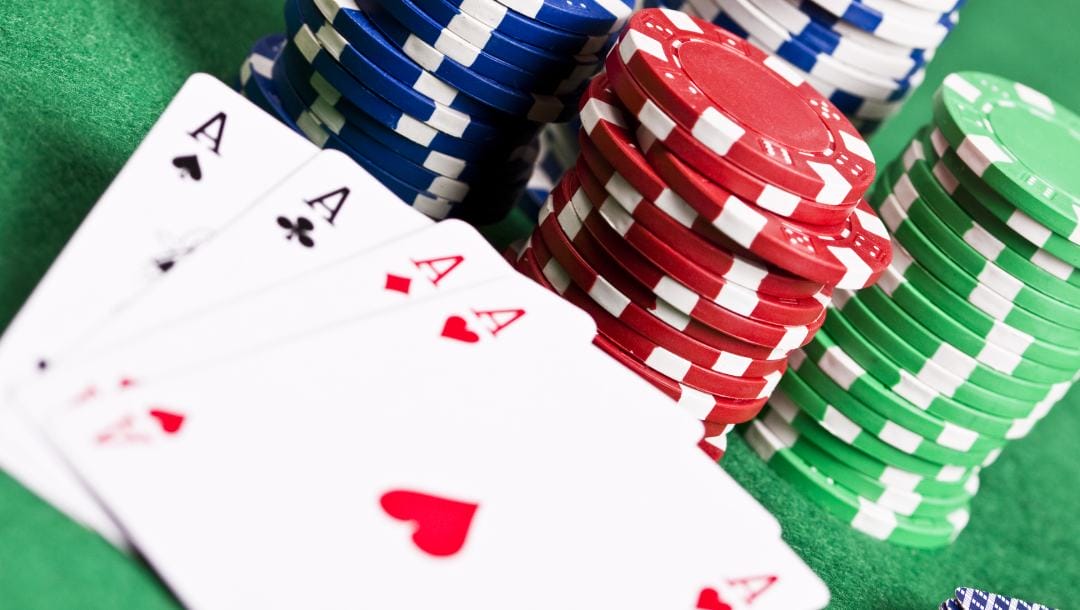Get more value from your calling range in online poker. Apply the gap concept to ensure that your calls beat your opponent’s hand at the showdown.
Breaking Down the Gap Concept in Poker

Many players would agree that online poker isn’t the easiest game to get really good at. Sure, it’s easy enough to grasp the basics — hand values, poker actions, turn order, and so on — but the game starts getting pretty technical beyond a certain level and can rapidly become overwhelming. The terminology is often daunting, which creates the impression that the concepts behind the terminology must be beyond the capacity of the average player to grasp. The good news is that, when it comes to scary-looking poker terms, their bark is often worse than their bite. When you break them down into logical, bite-size chunks, concepts like reverse implied odds and stack-to-pot ratio start to make sense and even become useful.
One concept that’s a whole lot less complicated than it seems at first glance is the gap concept. Coined by David Sklansky, the godfather of modern poker math, this term covers a great deal of useful poker betting strategy terrain. Read on to discover how it can help you raise your game next time you play poker online.
Defining the Gap Concept

So what’s the gap, and what’s the concept? It all has to do with poker hand ranges. Basically, Sklansky claims that there’s a significant gap between a hand that’s strong enough to open raise with, and a hand that’s strong enough to call that raise. The player who raises has two ways to win the pot. When it comes down to playing heads-up poker, they can have the strongest hand at showdown, or they can make every other player fold. However, the only chance for a caller who doesn’t raise to win is at showdown. As a result, for the caller to continue, their hand should be stronger than the hand range they would be comfortable raising with. In simple words, it takes a better hand to call than it does to open raise.
Putting the Gap Theory Into Practice
Here’s a practical example. Say, you’re in middle position and holding king-9 suited. Depending on the circumstances, it can be perfectly correct to open raise with this hand. But if a player in early position raises before you, the correct move is to fold your king-9 suited hand. Why is that? According to the gap concept, your calling hand has to be stronger than a hand you’d open raise with. The reason is that you can’t take the lead in a hand by calling, and you can’t make your opponent junk their cards. If all you do before the flop is call, you’ll have to call all the way to showdown — and then win — to take the pot. The only way to avoid this is to act aggressively and raise on a later street. This could be costly if you’re playing with a middle-strength hand. That explains why you should only call with stronger hands that can compete on the turn or river.
Mind the Gap

In the same way that it pays to be cautious before stepping from a train onto a platform, the gap concept can keep you out of trouble. Say you’re dealt ace-spades, jack-diamonds. It’s a decent hand to raise from the cutoff with, but what if someone raises from under the gun? Your opponent may be holding something like ace-king, or ace-queen suited. If an ace turns up on the flop, your hand will be dominated, pure and simple.
How wide is the gap, exactly? It varies according to table dynamics and player types. Against tight opponents, you’d want your calling range to be tighter than their opening range. Against loose players — the kind who don’t think twice about calling a triple-barrel bluff — you can adjust your calling range to be looser. As always, position is important. A player who raises from early position does so knowing that many players still have to act behind, which tends to suggest a strong poker hand range. The later they raise, the weaker their hand can be. As a result, ace-10 suited might be strong enough to call a late raise, but too weak to call an early raise.
Many players today feel that gap theory is somewhat out of date. After all, it was introduced back in the 1970s, long before GTO theory and poker solvers arrived on the scene. As a result, modern players say that the concept limits their creativity too much. That may or may not be true. One thing’s for sure — you’d have to be an ace at reading your opponents’ poker hand strength to do away with the concept entirely.
Play Top-Rated Online Poker at BetMGM
Ready to close the gap between theory and practice? Register at BetMGM where you’ll find cash games with stakes to suit any bankroll and test your skills when you join one of the daily, weekly, or monthly poker tournaments. Master multiple challenging poker variants and take your game to new heights. It doesn’t matter if you’re already semi-pro or you’re still figuring out that three of a kind is better than a two pair. For some downtime fun between online poker sessions, why not visit an online casino? A broad range of feature-rich slots and classic table games, including live dealer variations, are at your disposal any time you fancy taking a chance.


